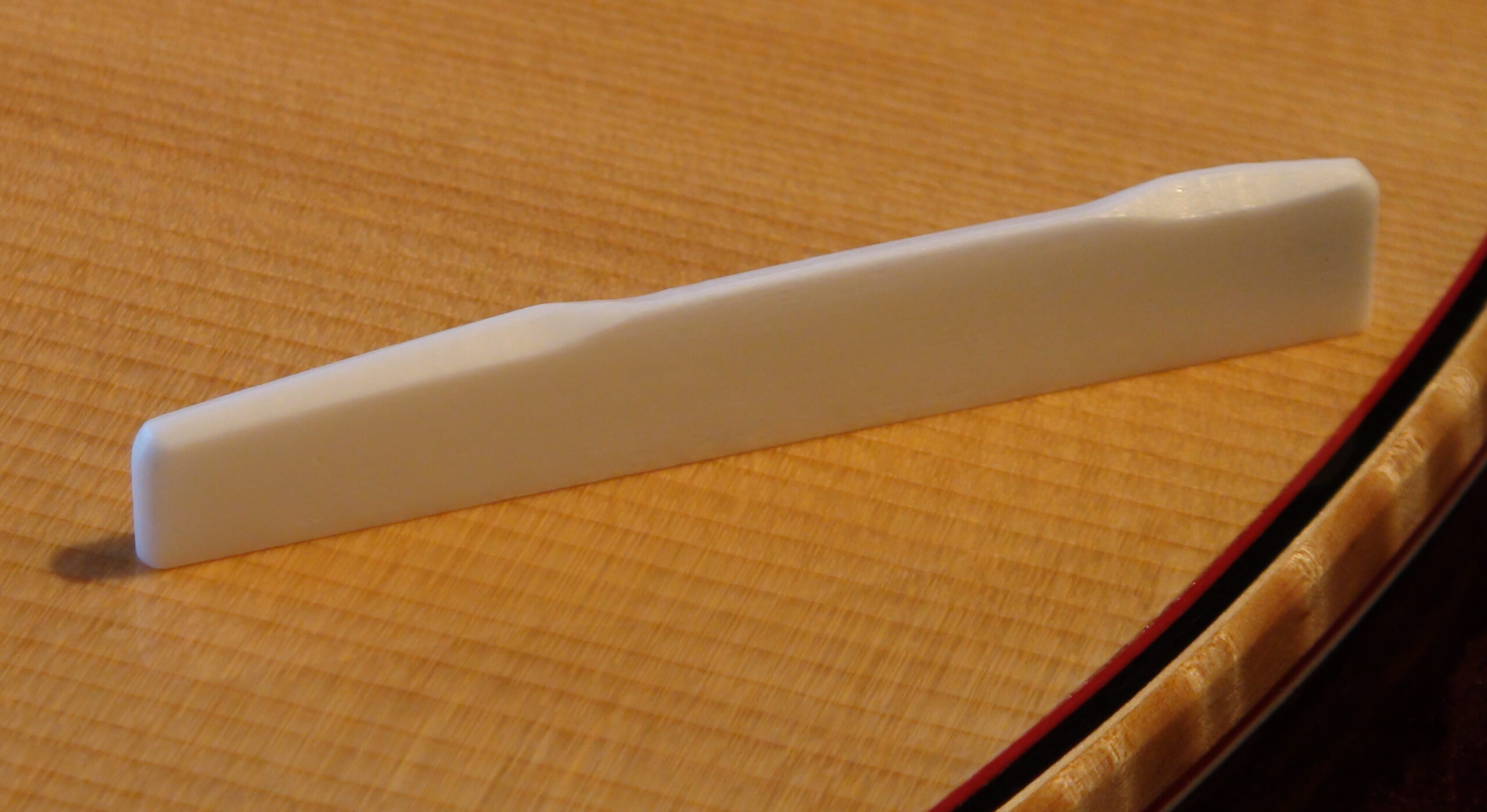What Are Bone Saddles?

Among replacement parts on a guitar, after the strings, a saddle will have the most notable effect on acoustic guitar tone. So, what exactly are bone saddles? The saddle is the strip of hard material set into the bridge that lifts the strings to the desired height. The saddle plays a key role in tone because it transfers string vibrations to the bridge, which then flows to the guitar top. Luthiers traditionally used bone, which is now almost always used on higher-end guitars. Bone saddles typically come from cow (bovine) bone, although luthiers sometimes use bone from other animals.
Benefits of Bone Saddles
Guitarits prefer bone for many reasons, including the following:
- Increased clarity and sustain
- Better overtones
- Overall richer tone
- Longer-lasting than plastic saddles
Furthermore, bone contains a touch of natural fat content. This provides subtle self-lubrication for the strings, which will slide smoothly during tuning.
Drawbacks of Bone Saddles
So why do so many beginner acoustic guitars come from the factory with plastic? Let’s look at the drawbacks of bone for manufacturers. First, guitar manufacturers will find bone more expensive than plastic. However, many beginning guitarists have not yet developed the ear to distinguish the tonal differences. Additionally, beginning guitarists may not know about the preference for bone among guitarists. As such, for a guitar manufacturer building beginner guitars, using bone introduces an increased expense that their customer base will unlikely pay more for.
Also, guitar manufacturers might use man-made material saddles for acoustic-electric guitars with an undersaddle pickup. Lower quality bone saddles can have dead spots that do not properly transmit to the undersaddle pickup. Higher quality bone saddles will rarely have such issues, but prove more expensive than plastic saddles, and thus not cost-effective for guitar manufacturers.
Bleached Versus Unbleached Bone
Bleached
Although more properly called ‘whitened’ because chlorine bleach should not be used for the whitening process, bleached bone saddles have a somewhat consistent white color. Many people prefer the consistent white color for newer guitars. Higher quality bone saddles are whitened with hydrogen peroxide rather than chlorine bleach. The peroxide will make the bone slightly softer, but the bone is still solid and hard. Lower quality, inexpensive bone saddles may have been whitened with chlorine bleach for the whitening process. This occurs because chlorine bleach is much faster and easier to whiten bone with. However, chlorine bleach also results in bone with a weak, chalk-like texture that produces poor tone and does not stand the test of time. Those chlorine bleach whitened saddles might sound better than the inexpensive plastic saddles on inexpensive beginner guitars, but won’t compare tonally or last as long as bone saddles properly whitened with hydrogen peroxide.
Unbleached
You will find unbleached bone a slightly harder material than bleached. It produces a subtly different tone as well. Many guitarists prefer the tone of unbleached bone as it will produce a slightly fuller tone than bleached bone does. Unbleached bone has a yellowish-brown color that is inconsistent not only from saddle to saddle, but often within an individual saddle as well. Guitarists often choose unbleached bone for older guitars as it has a similar color to that of aged bone.
